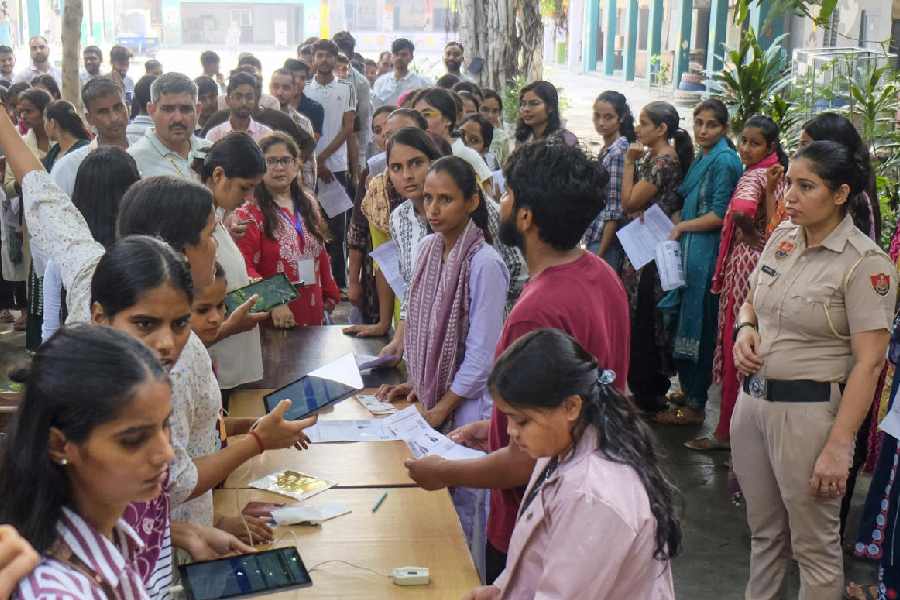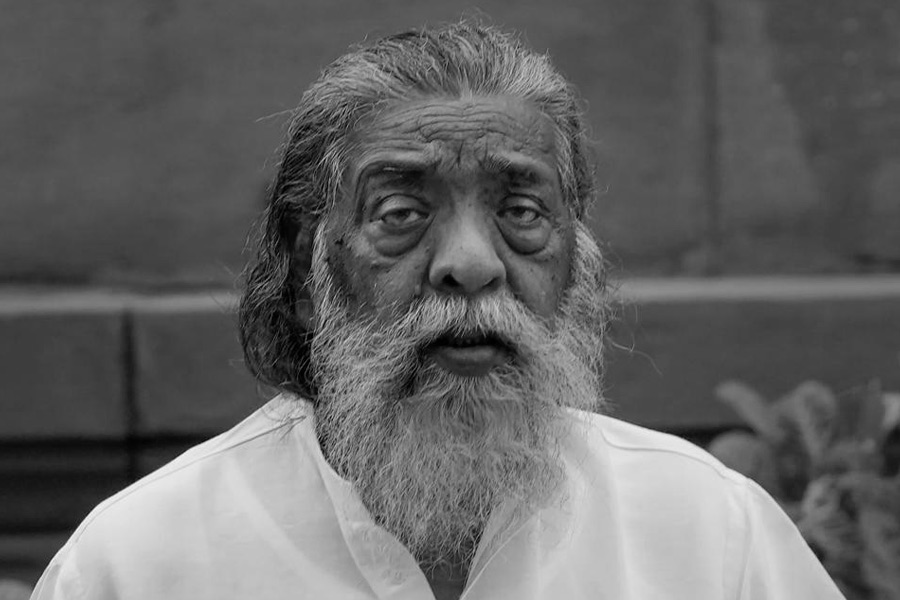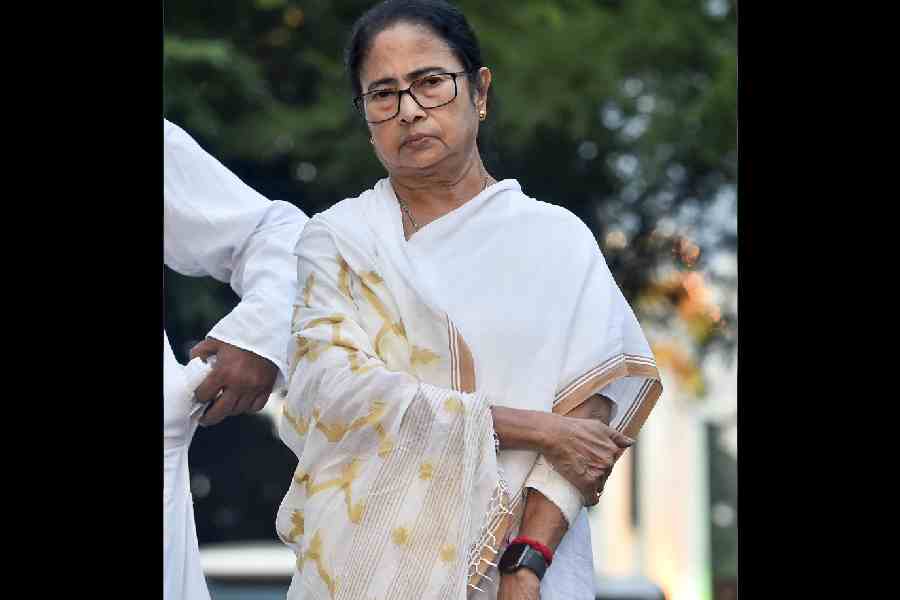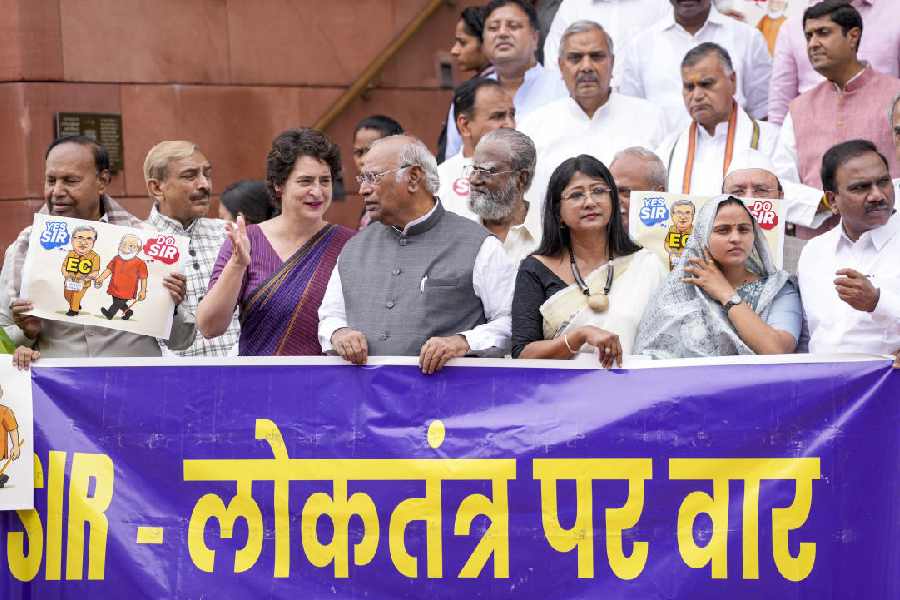 |
To wear or not to wear that short skirt? ‘Not’ is what most respondents to the Time to Talk question, ‘Should students be allowed to wear whatever they want on campus?’, had to say. Readers also felt that liberties should be granted, though “decency” should always be maintained. But who is to decide whether the hemline is too high or the neckline too low? Maybe, when we publish the rest of the letters next week, some light will be thrown on that, too.
lIndia is a free country and students should be allowed to wear whatever they want. For girls there is one condition, though: eve teasing must be stopped first. It is not as though if a girl wears shorts, she will forget her cultural heritage. Wearing full-length clothing doesn’t solve any problem, and wearing short skirts or shorts doesn’t mean that one’s academic performance will drop. Let girls be as free as the boys!
Pratika Gupta
Class X, Welland Gouldsmith
lA dress code for students is the last thing one would expect. Clothes create the identity of a person. Every individual has his/her taste and preference and is comfortable in what he or she likes best. Obviously one does not expect boys or girls in shorts, so some decorum should be maintained.
Anna Rozario
J.D. Birla
lStudents should be at liberty to wear whatever they want on campus. Dressing depends on individual tastes and preferences and this should not be circumscribed by any means.
Udita Sen
Gokhale College
lCollege students can wear whatever they want on campus provided it is decent, without any display of vulgarity. But school students must have a uniform.
Nandini Dasgupta
lI really don’t think mini-skirts and spaghetti-string tops should be allowed on campus. An educational institution is a place where students go to study. If any clothes are allowed, it will be hard to distinguish a college from a ramp. However, this doesn’t mean girls should be barred from wearing clothes they are comfortable in, like jeans or trousers. Restricting the dress code to salwar kameez is as unacceptable as allowing skimpy dresses in college.
Piali Dasgupta
Class XII, Patha Bhavan
lWhen students are in school, they should strictly stick to the school norms and be in uniform. But once they leave school, they should be allowed to wear what they want as long as they are decent.
Vineeta Nair
Class XII, Modern High School
lIn a school, there are students from all communities and classes. If we allow students to wear whatever they want to, they will dress according to their own customs and tastes. This will defeat the very purpose of a school uniform, which creates a feeling of unity, irrespective of religion or social status. Uniforms highlight the fact that education imparts equality. Moreover, school years are formative years in a student’s life when he/she is taught moral values. So students should be taught to judge each other on merit, not on what clothing is worn.
Ansul Goel
Class XII, Don Bosco Liluah
lIt is quite detestable and boring to wear the same old school uniform everyday. Students should be allowed to wear whatever they want on campus as their hip and vibrant clothing is refreshing for everyone. And if uniforms are mandatory for students, teachers should have uniforms too, shouldn’t they?
Shreya
lStrict rules are not necessary, but decency is important. Clothes must cover the body properly. In India, traditional clothing has always stressed on decency.
Moumita Rudra
lI think ‘liberalising’ the dress code will enable restricted students to be smart and vibrant in their outlook.
Korefaat Puttuwala
Animated gathering
Disney for the destitute. That too at the Raj Bhavan.
On Saturday, Governor’s House was witness to a special screening of Walt Disney’s forthcoming animation production Lilo & Stitch. About 260 children from three orphanages — Children’s Welfare Association (CWA), Dakshin Kolkata Sebashram and Disha Foundation — had come and the Brown Drawing Room on the first floor was abuzz with excited murmurs as they took their places on the sprawling carpet.
“This is the first time a film is being screened at Raj Bhavan,” said Arijit Dutta, distributor, Columbia Tristar. “Such events will take place every three months. We will decide on the film in accordance with the age of the children coming. While today’s group comprises those between five and 11, the next time if the age group is 12-15, the film chosen might be Treasure Planet, Disney’s futuristic take-off on R.L. Stevenson’s Treasure Island,” he added.
Saturday’s bunch missed meeting the Governor as he had to fly off that morning “on urgent business”. Not that they were complaining. Anup Dhara, Shibshankar Patra and Anil Tanti were too busy checking out the chandeliers and the ornate chairs. “It’s just like a palace, isn’t it?” they whispered.
Sormistha Biswas, who was co-ordinating the event on behalf of the NGOs, was busy finding places for them. Her worries were accentuated as one of the buses from Sarsuna, carrying the kids from CWA, was late. The film had already started when they trooped in. Another late-comer was Kusum Barui, from Navanir slum school, who had missed the bus in the rain and had to coax her mother to accompany her.
“Ki re, bujhtey parchis (Can you make out what’s happening) ?” the teachers asked them during the intermission. Most nodded in confident affirmation. After all, they had been taking in their dose of He Man, Tom and Jerry and Mickey Mouse in the school common rooms. After some snacks in the Banquet Hall and a hasty exchange of notes on whether the “big girl” was Lilo’s mother or sister, they were back for the rest of the adventures of Stitch, the “alien dog”.
“It’s great to have a Governor who thinks differently. Whenever we propose something for a good cause, he is extremely enthusiastic. Last year, too, we had brought the children over for a magic show by P.C. Sorcar Junior,” said Biswas.
At the end of the show, Lilo & Stitch T-shirts were handed out while the best student of each organisation was gifted a watch. And everyone had their share of fun on a day to remember.
Tell-tale test
Celebrating 125 years since its inception, the All India Anglo-Indian Association, Santragachhi branch, organised an Inter-School Story-telling Competition for students from Classes III to V.
Being the first of its kind, the programme received an overwhelming response, witnessing a congregation of 27 schools from Howrah and Calcutta for the Frank Anthony Memorial Inter-school Story-telling Competition. Held at St Agnes’ Convent School, the chief guest was Neil O’Brien, president of the All India Anglo-Indian Association. Superintendent of police, Howrah, Rajesh Kumar, was also present. All 54 participants grabbed the attention of the audience, with their humorous renditions or serious themes.
The programme drew to a close with some kids dancing to You are my Sonia. Afterwards, the prize distribution ceremony saw National Gems’ Higher Secondary School walking away with the ‘Best School’ award. As for the individual results, Soumi Das of National Gems’ stood first, closely followed by Shushman Choudhury of Calcutta Boys’ School and Surath Bhattacharya of Don Bosco Liluah. The participants’ list included Calcutta Boys, St Agnes’ Convent, St Aloysius’, Frank Anthony, Don Bosco Liluah, Don Bosco Park Circus, La Martiniere For Boys and Girls, Loreto Bowbazar, St Thomas’ Kidderpore, Welland Gouldsmith School and Loreto House.
— Anand Saraf
Class XII, Don Bosco Liluah
Chosen one
Three cheers are in store for a name that features regularly in these columns. Sangeet Shirodkar, a student of Apeejay School, a Tiger reporter for The Telegraph in Schools, contributor for Young Metro and a former ‘Star Spot’, is on his way to ECPAT (End Child Prostitution, Child Pornography and Trafficking) International General Assembly. Sanlaap, a Calcutta-based NGO that fights trafficking in South Asia, has nominated him for the Youth Board that is meeting alongside. Good luck to this guy with whirlwind energy, who also was awarded a certificate of honour for courage at The Telegraph School Awards for Excellence on Saturday. He is the only one representing Asia at the Thailand meet for over 150 countries. Congratulations, Sangeet!
Across borders
‘Crossing borders’ was at the centre of discussions at the international seminar on The Asian-American Literary Experience at American Center last week. Organised by the American Literature Study Circle, it brought together experts from Bangladesh, Korea, Malaysia, Finland, the US and, of course, India, to deliberate on multiculturalism in literature, life and the other arts.
Amitava Roy of Rabindra Bharati University (RBU) set the scene using The Telegraph’s report on Gurbux Singh, Britain’s leading race relations campaigner. The Indian-born cricket-crazy Sikh had to resign after getting drunk with joy and misbehaving with cops after India’s win in the NatWest Trophy final at Lord’s. Despite having a British wife and being a rabid fan of the Wolverhampton Wanderers football club, Singh failed the “Tebbit test” for immigrants to Britain by rooting for Sourav’s men.
Aninda Basu Roy of Vidyasagar University pointed out how the 1990’s border theory celebrated multi-cultural identities as opposed to the conventional ‘melting pot theory’ where the immigrant has to give up his/her original culture to embrace the adopted country’s norms.
The panel discussion on the second day brought up ways in which MNCs were exploiting a “willing” immigrant and Third World population, with emphasis on the software sector.
Shubhabrata Bhattacharya of Jadavpur University revealed how Chinese-American writers like Amy Tan try to influence the film versions of their work while Subir Dhar of RBU fused theory with fun to give a provocative perspective on Indian and American political cartoons.
The meet shed light on recent theories and problems of hyphenated identities.










